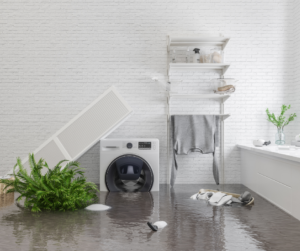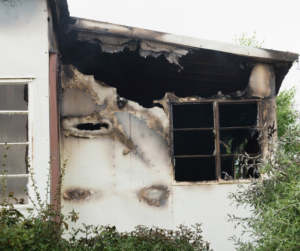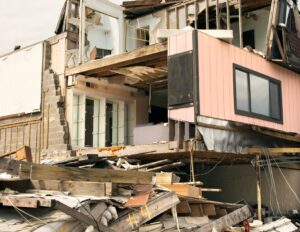We’re moving into hurricane season here in Florida. If you do experience a hurricane, damage from wind, rain and storm surges, if you live along the coast, can be extensive. Hurricanes can cause downed trees and wires, flying debris, flooding and landslides that can damage buildings and infrastructure, making walking or driving around, even after the storm is over, very dangerous.
In this article we provide a checklist of what to do if you’ve just experienced storm damage from a hurricane.
1. Prioritize Safety
The storm damage caused by a hurricane can seem overwhelming and chaotic. It can also be dangerous, with many of the risks hidden within the more obvious destruction. First of all, you should stay inside until the storm has passed. Keep your battery operated radio on so you can determine from forecasters if the threat has passed. If you’ve been evacuated, wait until local officials say you can return. Even then, you may want to wait a bit, since roads may be washed out or blocked due to downed trees and wires or from flooding.
Once home, the first thing to do is to secure the area and make an assessment of the risk from outside. Remember to wear heavy boots and long pants and shirtsleeves to protect yourself. Look for:
- Unstable structures
- Downed power lines
- Standing water (poses a risk of electrocution)
- The smell of gas
- Downed trees or partially broken tree limbs
If possible and not risky, shut off gas and electricity from outside the house. If there is any significant damage, flooding or if your house has been damaged by fire, don’t go inside. Leave the area and have a professional assess the risk.
If there doesn’t seem to be any significant damage from outside, enter your home, turning on your battery-powered flashlight before you enter (in case there’s gas present). Never use candles to provide light. Keep alert to risks such as:
- The smell of gas
- Cracks in the walls or foundation
- Leaning walls
- Flooding
Shut off water, electricity and gas if possible and not risky. Definitely don’t drink any tap water (whether the source is municipal or your own well) until the water has been tested. If there have been power outages there is a greater risk of carbon monoxide poisoning. Accordingly, don’t use a generator or other gasoline-powered equipment inside your house or garage.
If you notice any structural damage, leave the house right away and have professionals assess the condition of the house.
Don’t walk or drive around your neighborhood (other than to check in on your immediate neighbors), or any other damaged neighborhoods. As mentioned above there can be many hidden risks, from downed wires, water, broken trees, debris and even displaced dangerous animals such as snakes or alligators. Besides that, the roads need to be kept clear to facilitate the access of response teams.
2. Document Storm Damage
Once you’ve determined that it is safe to enter and perform a more thorough inspection of the interior of your house, the next step is to document the damage to both the structure of the building as well as to your belongings. It is important to not move or change anything (except for shutting off utilities).
The most typical types of damage to look for include:
- Damage to the roof including to the gutters, shingles, tiles or to the structure (by a fallen tree for example)
- Exterior damage including cracked or leaning walls, missing or damaged siding, water damage
- Damage to window and doors, including broken or cracked glass or doors that have been torn out of their frames
- Damage to heating and electrical systems including gas lines, outlets and fixtures
- Damage to the foundation and basement. Check for cracks and flooding
- Damaged or broken appliances and equipment
By the end you should have detailed written and visual documentation of all the structural damage (exterior and interior) as well as a comprehensive inventory of all your damaged belongings including their approximate value. You’ll need this meticulous documentation for your insurance claim.
3. Contact Your Insurance
Your insurance agent will verify your documented damage claims. The more detailed you are with your documentation, the easier it will be to receive financial compensation. If you have to do any immediate emergency clean-up (after documenting), make sure you keep receipts. The same goes for hotel stays if the damage is so severe that you can’t stay in your home.
Reliable Storm Damage Assessment and Repair
If you arrive back at your Florida home after a storm and determine that you need professional help to secure your property and assess the damage, give us a call. We respond to calls 24/7 and you can rest assured that we have extensive experience dealing with all sorts of storm damage and will know exactly what to do, from assessment and securing the area, right through to reconstruction.







Give us a follow!